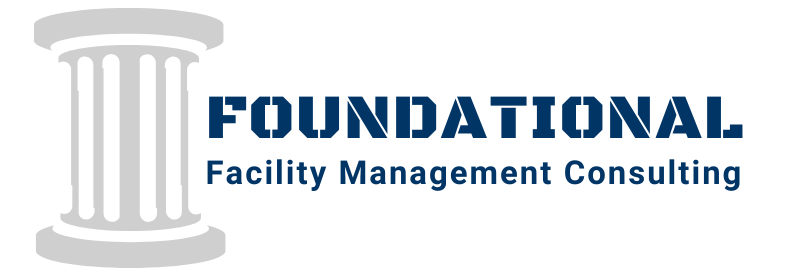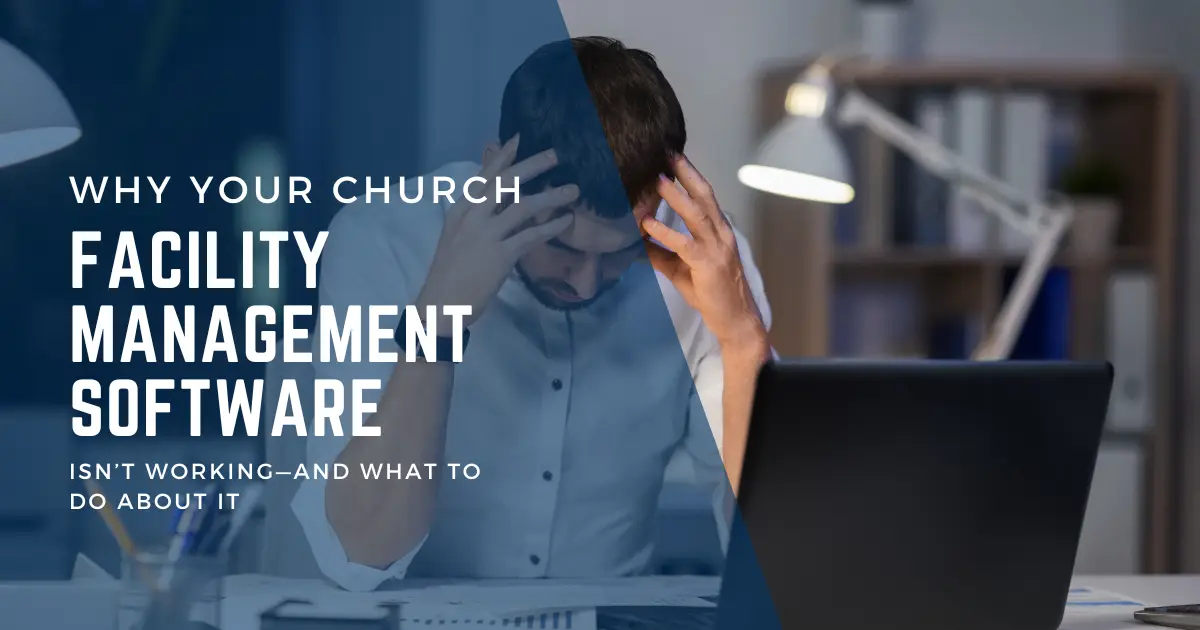You’ve probably been told that church facility management software is the answer to your building maintenance challenges. And it’s easy to see why—these programs promise to organize your work orders, track your assets, and make life easier.
Maybe you’ve already purchased facility software and it’s not doing what you hoped. Or maybe you’re looking into software, hoping it’ll finally bring some order to the chaos. Either way, you’re not alone—and there’s a missing piece many churches overlook.
The truth is: you don’t need to start with different software—you need a church facility maintenance plan.
At Foundational Facility Management Consulting, we’ve talked to both churches frustrated with the software they’re using and those just beginning to look for a solution. And in both cases, we’ve seen the same issue: the software isn’t the problem. The missing piece is the plan.
The Two Big Reasons Church Facility Software Isn’t Delivering
There are many reasons your facility software might not be working the way you hoped, but two show up most often:
1. There’s No Facility Plan Feeding the Software
A lot of churches assume the software comes with a plan. But while some tools include setup steps, most don’t actually walk you through how to create a facility plan that fits your specific building and ministry.
Without that plan in place, the software is only as good as the information you put into it. If you haven’t taken inventory of your building assets or mapped out a preventive maintenance schedule, the system won’t have the right data to guide your work. You’re left guessing, reacting, and often repeating the same issues over and over again.
2. The Software is Being Used as a Task List
We frequently hear from churches that use their software to track what needs to be done each week, or who use it mainly as a calendar to manage events and space usage. While that’s a helpful function, facility management software can (and should) do so much more.
Without a full plan in place, the software becomes a digital task list rather than a tool for tracking asset health, anticipating costs, and staying ahead of issues. And when that happens, churches fall back into reactive maintenance—handling emergencies instead of planning for what’s ahead.
The Role of a Church Facility Management Plan
Your church building is one of your greatest ministry tools. It’s the place where people gather, worship, serve, and connect. Taking care of that space shouldn’t be a constant burden—it should be a structured process that supports your mission.
That’s where a facility management plan comes in.
At Foundational, we use a 10-pillar framework to help churches build customized plans that reflect the size, age, and needs of their specific facility.
Not sure if your current approach is working—or if you even need a facility plan? Start by taking a quick inventory of how things are going today:
Is Your Software Serving Your Facility—Or Just Creating More Work?
Can you identify with the following?
- You only use your facility software to assign tasks or manage events
- You aren’t sure if all your building’s assets are documented anywhere
- You’re regularly surprised by equipment breakdowns or repair costs
- You can’t quickly access maintenance history for major systems
- Your team relies more on memory or paper notes than on your software
- You have to contact that one person who knows where things are or how they work every time you need some information
- You feel unsure what to enter into the system—or if it’s the right information
- You’re still reacting to problems instead of planning ahead
If you checked any of these boxes, then the issue may not be the software at all.
What you need is a clear, documented church facility management plan that brings order to the process and makes your software work for you—not the other way around.
What a Church Facility Maintenance Plan Makes Possible
Our 10-pillar approach helps you build a plan that brings structure and clarity to your facility management process. The first few pillars set the stage for everything that follows:
Facility Overview
This 10,000-foot view helps you understand how your spaces are used, what systems are in place, and where to focus next. Even if you think you “know your building,” this overview often reveals gaps or hidden maintenance risks.
Building Asset Inventory
You can’t maintain what you haven’t identified. Your asset inventory should include every major system and component in your building—HVAC units, kitchen equipment, roofs, water heaters, flooring, and more.
You don’t have to start from scratch. Foundational offers spreadsheet templates that walk churches through this process step by step, so you can build a reliable inventory without reinventing the wheel. Or you can work with us on a Facility Condition Assessment, where we complete this work for you.
Preventive Maintenance & Lifecycle Planning
Once you know what assets you have, you can schedule tasks based on manufacturer guidelines and practical experience. With that plan in place, you can use your software to automate task generation, track completion, and anticipate replacements instead of being surprised.
“But We’re Already Using A Different Software That Isn’t Built for Maintenance…”
We hear this often from churches using tools like Asana, Trello, or spreadsheets to manage their facilities.
And our response is always the same: Software can help, but it isn’t the solution. A facility management plan is what makes software effective.
You don’t have to switch systems to move forward. If your current tool allows you to organize tasks and track information, we can help you layer a custom facility plan on top of it. From there, it’s about consistency, structure, and knowing what to track—so your software supports your work instead of creating more of it.
What Happens During a Free Consultation?
If you’re feeling stuck or unsure where to begin, a 30-minute call with us is a simple first step.
We’ll talk through:
- Where your church facility stands right now
- What tools or systems you’re already using
- What your current pain points are
- How to start putting a plan in place that fits your building, your budget, and your ministry
You’ll walk away with a clearer sense of direction—and a few practical next steps to get started.
You Don’t Have to Figure It All Out Alone
You don’t necessarily need a new system or to overhaul your staff. And you don’t need to keep running in circles.
You need a plan that helps your church facility management software work the way it’s supposed to—and a process that supports your people and your building.
At Foundational Facility Management Consulting, we help churches like yours understand what you have, organize what matters, and build a system that supports your mission—not drains your energy.



